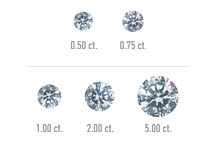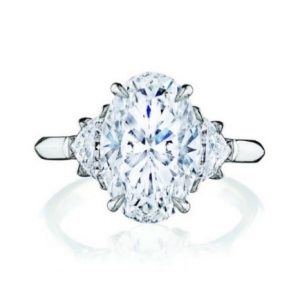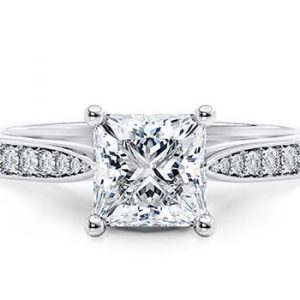CAPE TOWN'S MOST TRUSTED JEWELLER
Diamond Education
Diamond quality factors

Diamond Cut
A diamond's cut (proportions, symmetry, and polish) determines how its facets reflect light.

Diamond Colour
The quantity, size, relief, and location of inclusions and blemishes are evaluated using the clarity scale

Diamond Clarity
The quantity, size, relief, and location of inclusions and blemishes are evaluated using the clarity scale.

Diamond Carat Weight
Larger diamonds of the same quality that are rarer are worth more per carat.
CAPE TOWN'S MOST TRUSTED JEWELLER
Diamond Education
The 4c's of Diamonds Explained
You probably know about the 4C’s of diamond, i.e., Carat, Colour, Clarity, and Cut. However, educated buyers know there are 7 C’s to consider when buying a diamond.
Your engagement diamond will be your most emotional purchase ever. It is a symbol of purity and forever love. And if uniquely designed with a rare and natural diamond, it will bring daily joy and serve as an heirloom for future generations.
Now that you are making a huge investment in something special – you need to know what you are doing.
After 40 years of creating the perfect ring for thousands of couples, my advice is as follows:
The First C: CUT
Diamonds are weighed in Carats. One Carat equals 200 milligrams. Carat weight is not necessarily an indication size, as two diamonds of equal weight can look vastly different due to differences in their cut and proportions. Large diamonds are rarer and more expensive.
Expert advice: As a couple, you should discuss size vs. clarity vs. colour, determine your preference and buy the diamond within your budget. Find one that speaks to you both.
The Second C: COLOUR
Natural diamonds may appear colourless to you but have yellowish or brownish tints. The colour of a diamond is graded on a scale starting at D (colourless) to Z (heavily tinted.) The closer the colour is to D, the rarer and more valuable your diamond will be.
If the intensity of the tint is darker than a Z colour, it is called a “fancy” colour. Fancy coloured diamonds are extremely rare and expensive.
Expert Advice: Look at several diamonds, preferably in daylight, and decide whether you like the icy-white of D to G colours, the still white and less expensive colours in the H to K range, or whether the warmer appearance of a yellowish or brownish tint appeals to you. It surely will appeal to your pocket. Buy the size and colour you like within your budget.
The Third C - CLARITY
The clarity grade of a diamond depends on the presence of internal inclusions or blemishes that may affect its appearance. The FL and IF grade mean the diamond is flawless with no visible inclusions under 10x magnification.
Next are the VVS1 and VVS2 grades, which means Very,Very Slightly Included. An expert needs a microscope to see this.
Then there are VS1 and VS2, which mean Very Slightly included, followed by SI1 and SI2, which are Slightly Included and visible through a jeweller’s handheld loupe. The final clarity grades are I1, I2, and I3, describing inclusions visible to the naked eye.
Expert advice: The inclusions in your diamond act as a fingerprint and tells me whether it is natural or man-made. If the stone is flawless or of VVS clarity, I need our GIA i100 synthetic diamond detector to identify it as natural or not. Even a GIA Report and an engraved number on the stone is no guarantee that it has not been swopped with a man-made stone of similar grade and proportions. Thus, if you buy a natural diamond, ask the seller to show you that your diamond belongs to its certificate.
NOTE: Less than 1% of natural diamonds are flawless and thus expensive. If she insists on a flawless diamond (as a symbol of your love) settle for a smaller stone, but give her what she wants. Otherwise, a VS or SI clarity will suffice.
If she wants something unique and is not sensitive about the inclusions in a diamond, an affordable “salt and pepper” diamond may please her. Otherwise, stay away from visible inclusions.
The Fourth C: CARAT WEIGHT
Diamonds are weighed in Carats. One Carat equals 200 milligrams. Carat weight is not necessarily an indication size, as two diamonds of equal weight can look vastly different due to differences in their cut and proportions. Large diamonds are rarer and more expensive.
Expert advice: As a couple, you should discuss size vs. clarity vs. colour, determine your preference and buy the diamond within your budget. Find one that speaks to you both.
Popular Diamond Shapes

Round Brilliant Cut Diamond
This round shape has long been a classic for engagement rings. It can be set as a solitaire or surrounded by a halo of diamonds. Or it can be flanked by smaller diamonds

Marquise brilliant Cut Diamond
This elegant, regal shape provides the illusion of length—ideal for a broad finger.

Oval brilliant cut Diamond
The oval is an elongated round shape and the favourite of royalty

Pear Brilliant cut Diamond
The pear-shaped diamond has the brilliance of a round but is beautifully a-symmetric.

Princess Cut Diamond
This square shape has a modern presence when set in a ring.

Emerald Cut Diamond
This octagonal cut diamond has large step cut facets that give it an art deco appearance.

Radiant Cut Diamond
The Radiant cut was developed in South Africa and has cut corners and a unique facet pattern. It is a combination of the emerald and brilliant cut.

Cushion Cut Diamond
This cut resembles a pillow with rounded corners, predates most other modern cuts, and provides a more vintage look.

Options for a Centre Stone.
If you like size and colour and have a limited budget, why not consider the second hardest gemstone after diamond as an engagement stone? Natural sapphire comes in all colours, while natural ruby is available in shades of red and looks terrific with a diamond halo or side stones.
FAQ about Diamonds – Questions and Answers
Q) What is a diamond?
A) A diamond is one of Mother Nature’s most unique creations. Formed three billion years ago, deep in the mantle (up to 600 km below the continents) from where it was brought to the surface by extinct volcanoes. Lab-grown diamonds are created in a factory and must be described as Lab-grown or Man-made.
Q) Are diamonds rare?
A) Tons of diamonds are mined annually. However, only one per cent of mined diamonds are transparent and can be described as natural gem diamonds.
Q) What makes a Prins & Prins diamond special?
A) Our gemmologists source eco-friendly diamonds from local mines and cutting factories, select those with very good or excellent proportions and have them certified by GIA or EGL(SA.) We eliminate all middlemen and our award-winning goldsmiths will set it with love in an item of your choice.
Q) What is a conflict-free diamond?
A) In the 1990’s, Conflict Diamonds, aka “blood diamonds” were those sold to finance
terrorist activities in Africa. Since then, the definition of Conflict Diamonds has been
broadened to include diamonds whose mining or polishing involved any human
abuse.
Q) Does Prins & Prins care about conflict diamonds?
A) Yes. Prins and Prins has a zero-tolerance policy towards conflict diamonds. Our
diamonds are responsibly sourced and come from South Africa, Namibia and
Botswana.
Q) What is the difference between lab-grown and natural diamonds?
A) Natural diamonds are formed beneath the earth & surface over billions of years. Lab-
grown diamonds are man-made and are created in a machine in a few weeks.
Natural diamonds often contain small amounts of nitrogen (which causes a yellow
tint in diamonds) while lab-grown diamonds do not.
Does Prins & Prins offer ethically sourced diamonds?
A) Our diamonds, coloured gems and precious metals are obtained from suppliers who
do not deal in conflict diamonds as described by the United Nations requirements on
‘blood diamonds.’
Q) What is the provenance of my Prins & Prins diamond?
A) We obtain our diamonds from, amongst others, divers along the Atlantic Coast and
from known cutting factories in South Africa. Our gemmologists ensure each
diamond is cut perfectly and graded before being sold. We are also registered to buy
diamonds from the public and can offer these as eco-diamonds, because their
carbon footprint has already been accounted for.
Q) What diamond cut looks biggest?
A) If an oval, marquise or emerald cut diamond is cut perfectly, it appears bigger than a
round brilliant cut diamond of the same weight.
Q)What determines the price of a natural diamond?
A) The price of natural polished diamond is a reflection of its size (carat weight) its
colour, clarity and the quality of its cut, known as the 4 C’s. The higher colour,
clarity and carat weight, the rarer the stones and therefore the price is justifiably
higher.
However, to correctly price a diamond today requires specialist knowledge. Blame it
on technology, the internet, or whatever. In the past, the 4 Cs were enough. Not
anymore.
In recent years, the internet provided price lists, which destroyed the mystery of
diamond pricing and enabled the buying public to calculate a price per carat based
on the 4C’s. Diamond cutters and wholesalers started to sell online to the public in
direct competition to retailers, their traditional clients. Retailers then refused to buy
from those competing with them, and the traditional supply chain – from cutting works
to wholesaler to retailer – became unstuck.
The international diamond trade, to stabilize the pricing of diamonds and to make it
difficult for the public to compare prices, thus added on top of the 4Cs, new factors
that influence diamond pricing.
Q) How much does an engagement diamond cost in South Africa?
A) Engagement diamonds can cost from as little as R5000, right into the hundreds of
thousands of rands. Today’s ring buyers may spend between R20,000 to
R100,000 and upwards on their engagement ring, but this is a personal
decision. The beauty of custom designed engagement rings is it allows you to find
your dream ring within your specific budget.
Although the price of the ring remains fairly constant, diamonds and gemstones vary
hugely in price, meaning you can tailor your ring to your personal budget. If you
know the style of your engagement ring, start by contacting a jewellery professional
at Prins & Prins Diamonds.